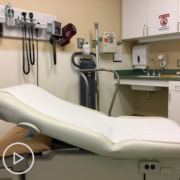Diagnosed with Myeloma? An Advocate’s Key Advice
Diagnosed with Myeloma? An Advocate’s Key Advice from Patient Empowerment Network on Vimeo.
Where do you start after being diagnosed with a myeloma? Myeloma survivor and advocate, Jack Aiello, shares key advice on second opinions, keeping up with lab tests, and educating yourself about your myeloma.
Jack Aiello is a multiple myeloma survivor and patient advocate. He is involved with a number of advocacy organizations around the country, including serving on the Board of Directors for the Patient Empowerment Network. More about Jack here.
See More From The Pro-Active Myeloma Patient Toolkit
Related Resources

|

|

Hesitant to Join a Support Group? Encouraging Advice from an Advocate |
Transcript:
Jack:
So, I’m often contacted by either newly diagnosed patients or a friend of a newly diagnosed patient and asked to – by that patient, what should they be doing.
And I usually give several pieces of information. One is, as I previously mentioned, getting second opinions are important, but I’ll also talk about how important it is to understand your lab values. It’s not so important what a particular number is that month, but what is important is the tracking or trend of those lab numbers. You should be asking your doctors what myeloma markers are they looking at to determine if a treatment is working or not. You can become familiar with those markers as well and track them yourself.
There’s some tools out there; you can also just put them in a spreadsheet if you like. But it’s a good way to kind of stay on top of your own myeloma; it’s also helpful, if you do ever want to get a second opinion, to be able to share that information with others.
And I think that when talking with that newly diagnosed patient as well, I think it’s important to remind them that – there has been so much progress forward; they will hear that the good news is there are many, many more treatments out there for myeloma, certainly than when I was diagnosed 24 years ago.
But the negative side of that is, there are certainly many, many more treatments out there than when I was diagnosed 24 years ago, but you don’t necessarily know what the best treatment is for you. So, that goes back, again, to working closely with your oncologist, working with that second-opinion doctor, understanding your numbers, understanding what your myeloma stage was and maybe what your risk factors are that you can learn from myeloma tests that are being taken, and try to get as full









